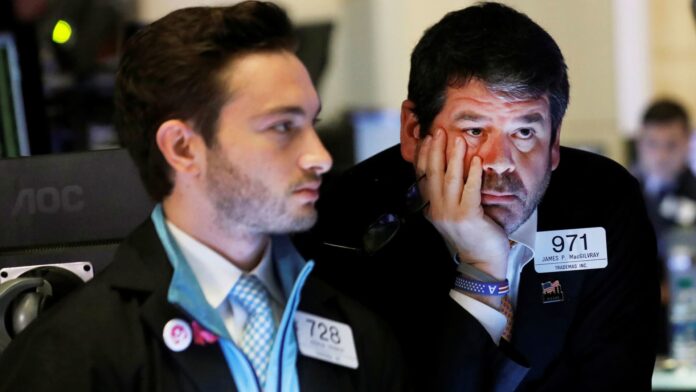Companies with large amounts of floating rate debt on their balance sheets could be in big trouble as the Federal Reserve continues to raise rates to tamp down high inflation. As interest rates continue to rise, that debt may be harder to pay back or refinance — things that could weigh on company earnings and valuations, according to UBS. About 11% of S & P 500 debt is floating, versus about half the debt for the Russell 2000, according to a Monday note from UBS. These metrics exclude debt from the financial sector in each index. “As such, the Fed’s planned hikes/higher rates could be a ~180bps hit relative to EPS using floating debt and bonds maturing by ’23,” wrote UBS strategist Keith Parker. The hit to small cap stocks is more than 10 times larger, and a 1% increase in the cost of equity could reduce valuations by 9%, according to the note. If the Fed does indeed hike interest rates to 4.6% by the end of 2023 – the terminal rate they named at the September meeting – earnings per share for companies with high floating rate debt exposure could see a 25% headwind from rising interest rate expenses, UBS said. Companies to watch To figure out where the potential land mines are, UBS screened the S & P 500 — excluding financials and real estate — for companies in which floating rate debt makes up at least 5% of total debt. Then, they sorted for those with the highest exposure to floating rate debt. (UBS calculated exposure through a weighted average of floating rate debt to EBITDA, short-term debt as a percent of the total and interest rate coverage.) Travel and transportation companies are the most represented on UBS’s list. Cruise lines Royal Caribbean , Carnival and Norwegian all have high exposure to floating rate debt, according to the note. Norwegian Cruise Line Holdings has the highest net floating debt-to-EBITDA ratio of the group. United Airlines and Alaska Air Group are also at risk. Travel companies often have high debt ratios because their businesses rely on expensive equipment including planes and ships. These names also incur high costs from the many employees needed to manage those vehicles. Barclays takes a slightly different approach to gauge which companies to avoid due to floating interest rate debt. After sorting for the top quartile of S & P 500 names, the firm then screened for companies where floating rate debt makes up more than 20% of total debt. The firm found 27 names total; the companies with the most outstanding floating rate debt are in the chart above. Its list has health care companies Icon and Elanco Animal Health in the top spots as most of their debt is floating rate. United Airlines also makes an appearance on Barclays’ list, as 52% of its debt is floating rate debt. — CNBC’s Michael Bloom contributed to this report.
© heardonwallstreet.com


